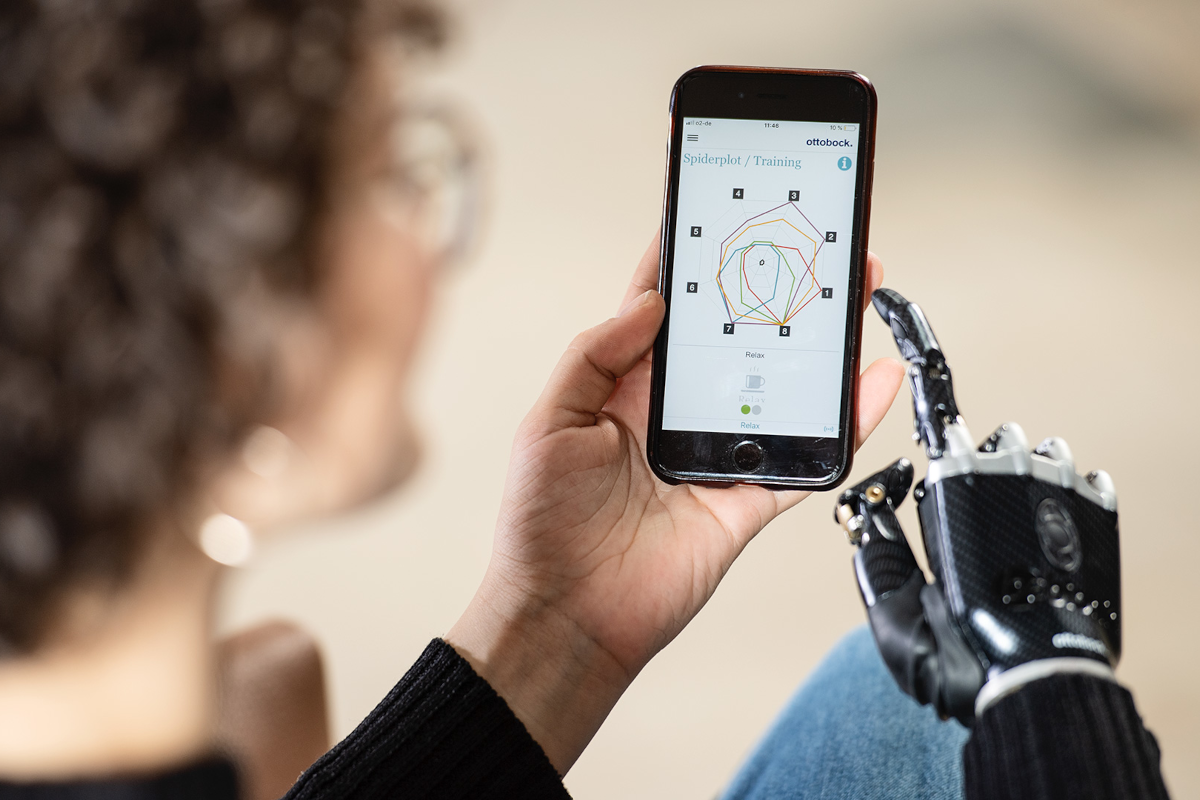Myo Plus TH: Ottobock presents important innovation at OTWorld
Myoelectric impulses in the muscles generate movements, for example, of the hand. Intelligent prosthetic hands utilise this: Electrodes in the prosthetic socket read the muscle impulses and AI (artificial intelligence) learns what movements the prosthesis user wants to perform, such as reaching for a bag. To date, Ottobock has offered such “mind-controlled” prostheses only for the forearm (Myo Plus). That is because the upper arm provides far fewer myoelectric signals: Opening and closing, inward and outward rotation of the hand, and flexing and extending the elbow joint all happen in the forearm. Elaborate systems are therefore required to reproduce and control these movements when the arm is amputated above the elbow.
Ottobock has risen to the technological challenge and presented the approach to solving this problem for the first time at the OTWorld exhibition booth and conference: Myo Plus TH, prosthesis control for the Dynamic Arm that learns and intuitively executes the desired movements in the upper arm using AI and pattern recognition. To accomplish this, considerably more electrodes to recognise muscle impulses are used in the prosthetic socket with Myo Plus TH control. “With this innovative upper arm solution, we hope to provide even more people with the best possible treatment,” says Ottobock’s Chief Technology Officer, Dr Andreas Goppelt. “The results of initial in-house tests were promising and we are now working hard to achieve market readiness for the benefit of our users!”
The Myo Plus system was already a milestone in prosthetics: “We first presented it at OTWorld in Leipzig back in 2018. Exactly four years later, we are now proud to introduce the further development for the upper arm as the next major step,” says Product Manager Martin Wehrle of Ottobock, who wears a prosthetic arm himself. He and Matthias Sommer (Trainer Upper Limb, Ottobock) introduced the “Myo Plus TH” concept to the public in the OTWorld “bebionic and Myo Plus: Lessons learned and outlook” workshop on May 11.
The first user, Karl-Heinz Ammon, is the first European to undergo TMR (targeted muscle reinnervation) surgery, he now wears the new Myo Plus TH control, a Dynamic Arm and the bebionic hand as part of an Ottobock development project. While TMR surgery after an amputation is not a requirement for a prosthesis with Myo Plus TH, it offers considerable added value: Surgeons connect nerves that transmitted signals to the natural arm with still existing muscles. The prosthesis then has access to more control signals. The combination of TMR and Myo Plus TH thus has great potential for improving the quality of treatment. Karl-Heinz Ammon, who lost his arm above the elbow due to an occupational accident, is pleased that the myo-technology now works for users like him as well: “My previous prosthesis determined the movements for me,” he says. “With Myo Plus, I finally determine the movements of the prosthesis. It learns from me. This is the way of the future!”
Myo Plus TH will also be presented with interview opportunities and user Karl-Heinz Ammon during the Ottobock Media Day (9 June 2022, Bötzow site, Berlin). Information about the event is available directly from our press team at OTWorld.

